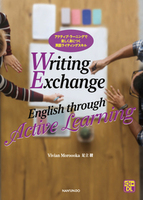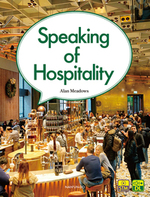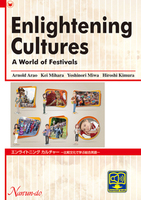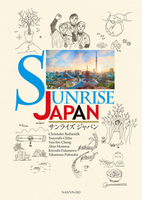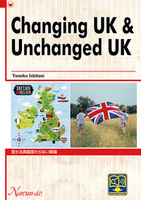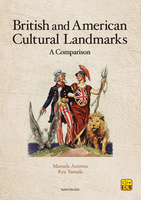An Introduction to Scientific English for Japanese College Students 大学生のための科学英語入門
イギリスで使われている中等教育用理科教科書 Nigel Heslop(他著)Hodder Science: Pupil’s Book A: Second Edition(2004年)を、日本の大学生向け科学英語学習用にアレンジ。大きなテーマに様々な角度からアプローチすることで、読み手の興味や問題意識を喚起する構成になっている。巻末の注釈を充実し、科学英語の入門テキストとして最適。
Chapter 1 Life
1.1 Cells
1.2 Tissues
1.3 New cells from old
1.4 Henrietta Lacks and her immortal cells
1.5 Are you irreplaceable?
Closer
Chapter 2 Changes
2.1 Carnival people
2.2 A closer look at carnival people
2.3 Hard lessons
2.4 Expansion
2.5 Stretchy and bendy
2.6 Always moving and mixing
Literacy activity Watching Changes
Closer 34
Chapter 3 Energy and fuels
3.1 Temperature changes
3.2 Energy from the Sun
3.3 Electric choices I
3.4 Electric choices II
Literacy activity Sunshine
3.5 Fuels
Closer
Chapter 4 Solutions
4.1 Good solutions
4.2 Picture solutions
Literacy activity Bends & sweets
4.3 Unscrambling liquids
4.4 States change
4.5 Gases and boiling
Closer
Chapter 5 Variation and classification
5.1 Variation
5.2 What causes variation?
Literacy activity Charles Darwin
5.3 A select group
5.4 Belonging together
5.5 Clones
Closer
Chapter 6 Acids, alkalis and salts
6.1 Chemical opposites
6.2 Measuring acids
6.3 Salt and water
6.4 Safety with acids
Closer
Chapter 7 Habitats, adaptation and chains
7.1 Is there life on Mars?
7.2 Jungles, deserts and ice palaces
7.3 A year in the life of a fox
7.4 Food chains and webs
7.5 Survival!
Closer
Chapter 8 Chemical change
8.1 What munches metal?
8.2 Making a fizz
8.3 A nice change
8.4 Fire
8.5 Burning hot
Closer
Notes
1.1 Cells
1.2 Tissues
1.3 New cells from old
1.4 Henrietta Lacks and her immortal cells
1.5 Are you irreplaceable?
Closer
Chapter 2 Changes
2.1 Carnival people
2.2 A closer look at carnival people
2.3 Hard lessons
2.4 Expansion
2.5 Stretchy and bendy
2.6 Always moving and mixing
Literacy activity Watching Changes
Closer 34
Chapter 3 Energy and fuels
3.1 Temperature changes
3.2 Energy from the Sun
3.3 Electric choices I
3.4 Electric choices II
Literacy activity Sunshine
3.5 Fuels
Closer
Chapter 4 Solutions
4.1 Good solutions
4.2 Picture solutions
Literacy activity Bends & sweets
4.3 Unscrambling liquids
4.4 States change
4.5 Gases and boiling
Closer
Chapter 5 Variation and classification
5.1 Variation
5.2 What causes variation?
Literacy activity Charles Darwin
5.3 A select group
5.4 Belonging together
5.5 Clones
Closer
Chapter 6 Acids, alkalis and salts
6.1 Chemical opposites
6.2 Measuring acids
6.3 Salt and water
6.4 Safety with acids
Closer
Chapter 7 Habitats, adaptation and chains
7.1 Is there life on Mars?
7.2 Jungles, deserts and ice palaces
7.3 A year in the life of a fox
7.4 Food chains and webs
7.5 Survival!
Closer
Chapter 8 Chemical change
8.1 What munches metal?
8.2 Making a fizz
8.3 A nice change
8.4 Fire
8.5 Burning hot
Closer
Notes









